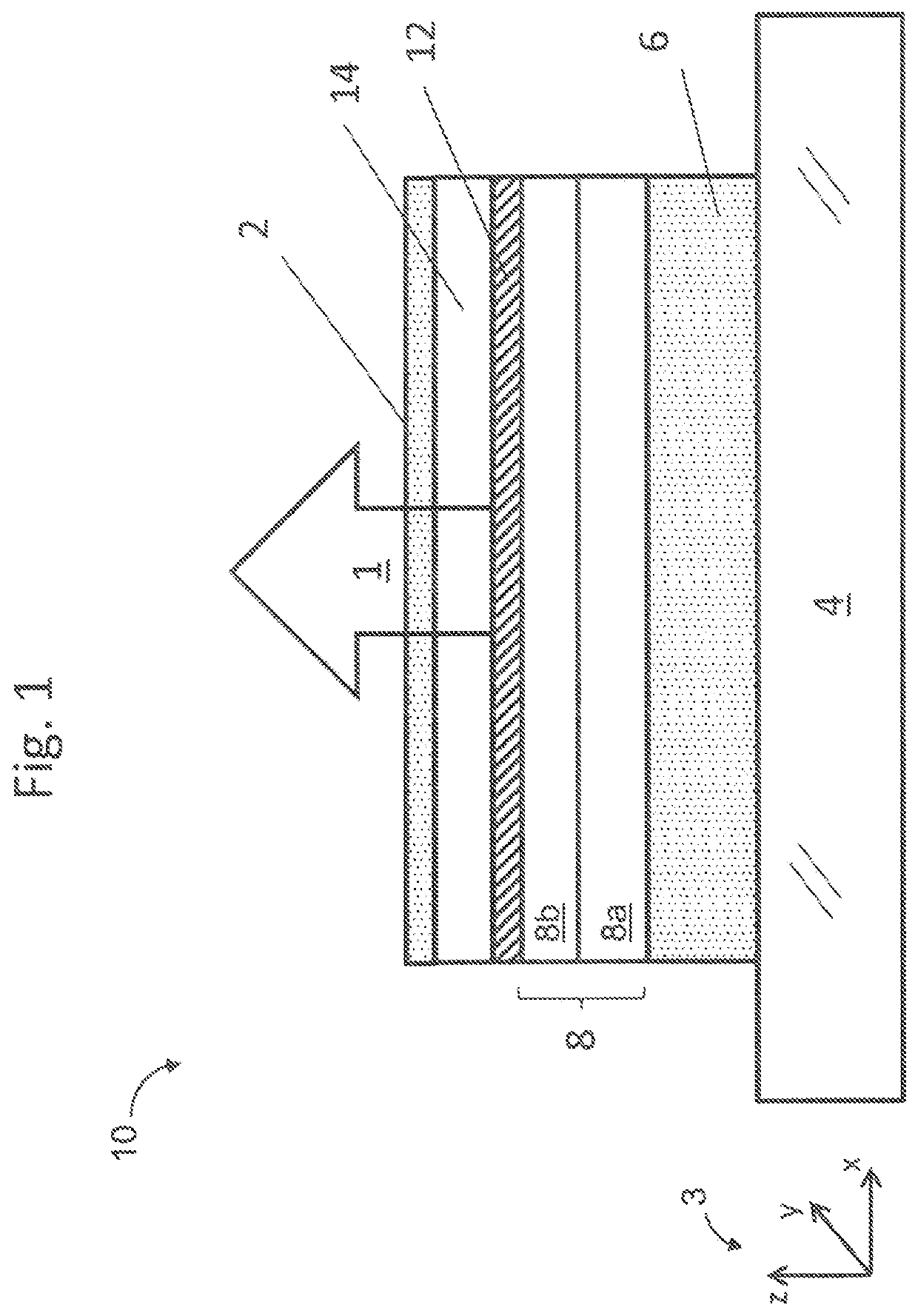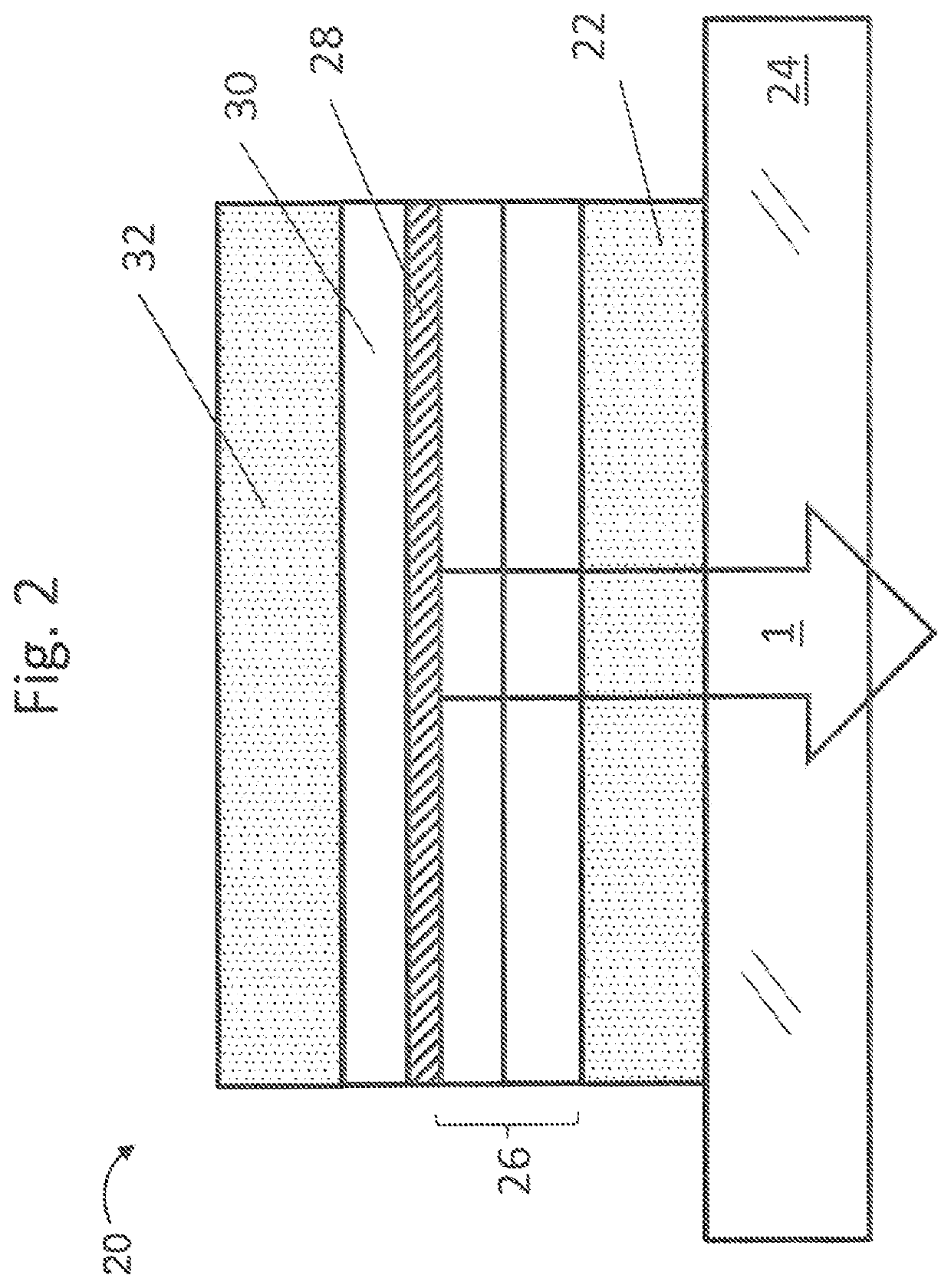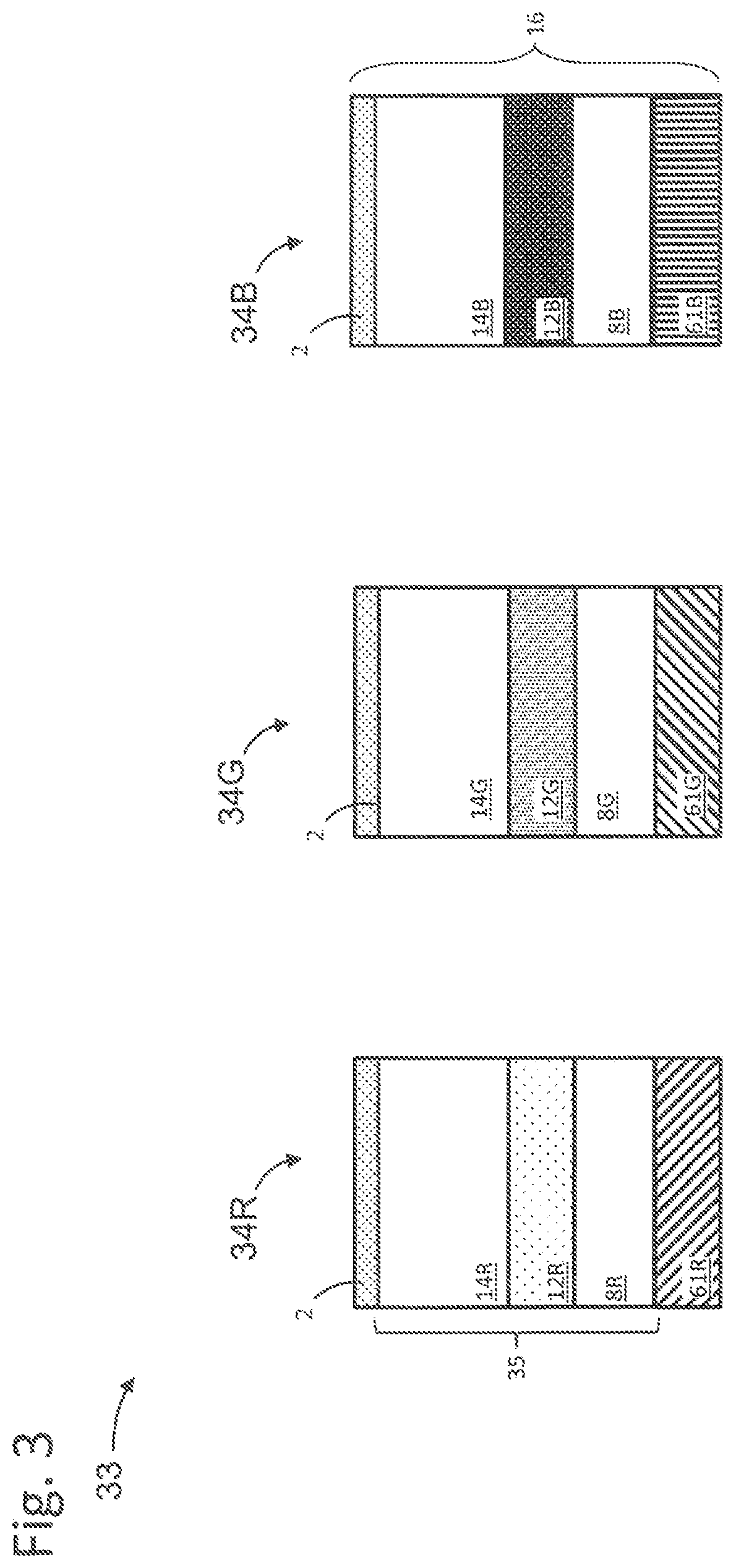High-efficiency qled structures
- Summary
- Abstract
- Description
- Claims
- Application Information
AI Technical Summary
Benefits of technology
Problems solved by technology
Method used
Image
Examples
Embodiment Construction
[0022]Embodiments of the present invention will now be described with reference to the drawings, wherein like reference numerals are used to refer to like elements throughout. It will be understood that the figures are not necessarily to scale.
[0023]FIG. 1 is a drawing depicting an exemplary top emitting (TE) light-emitting device structure 10. The TE structure 10 emits light 1 through a top conducting layer, a top electrode 2, that is a partial reflector formed opposite from a substrate 4. The substrate 4 may be a glass substrate on which a bottom conducting layer, a bottom electrode 6, is formed. The thickness of the bottom electrode 6 may be greater than 80 nm. The bottom electrode 6 may be a metallic material configured to reflect light to enhance emission through the top electrode 2. The bottom electrode 6 is typically aluminum, silver, Indium Tin Oxide (ITO), and the like or a combination thereof. The bottom electrode 6 may be connected to a voltage source for applying differe...
PUM
 Login to View More
Login to View More Abstract
Description
Claims
Application Information
 Login to View More
Login to View More - R&D Engineer
- R&D Manager
- IP Professional
- Industry Leading Data Capabilities
- Powerful AI technology
- Patent DNA Extraction
Browse by: Latest US Patents, China's latest patents, Technical Efficacy Thesaurus, Application Domain, Technology Topic, Popular Technical Reports.
© 2024 PatSnap. All rights reserved.Legal|Privacy policy|Modern Slavery Act Transparency Statement|Sitemap|About US| Contact US: help@patsnap.com










